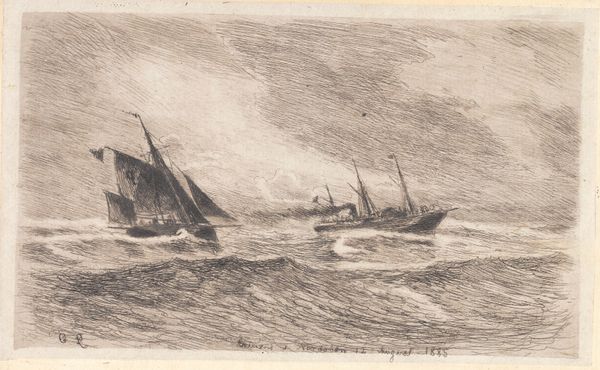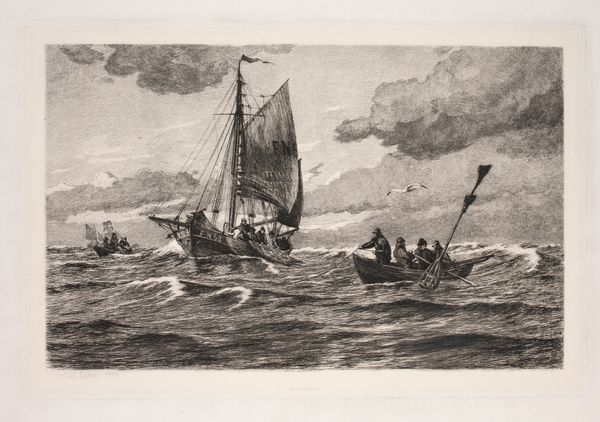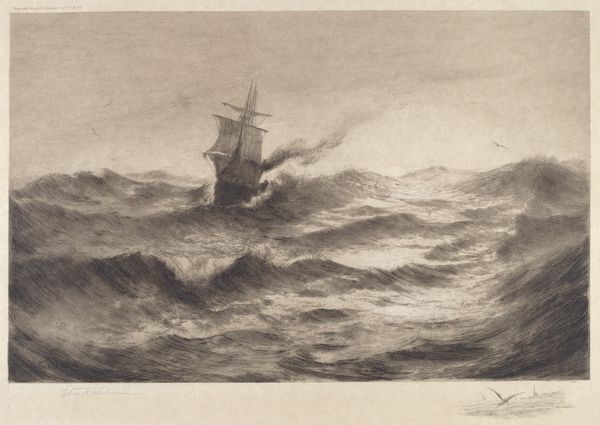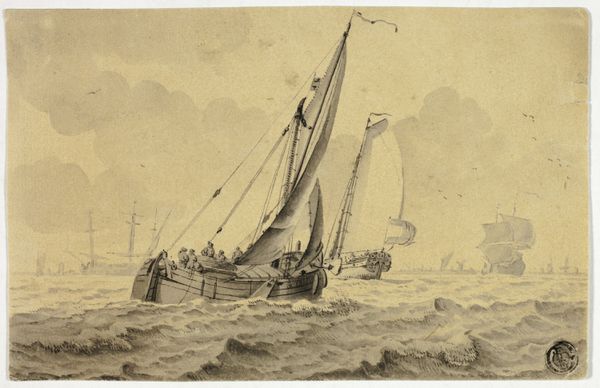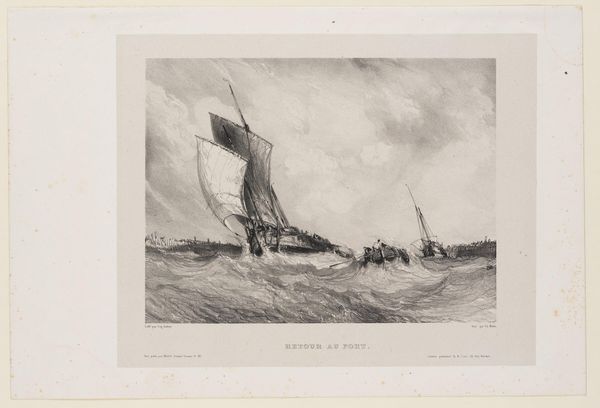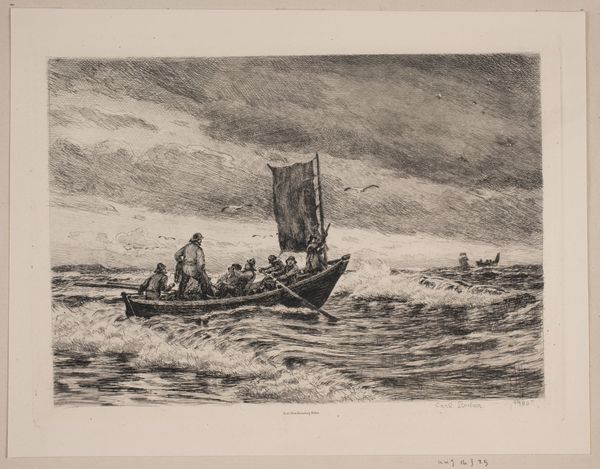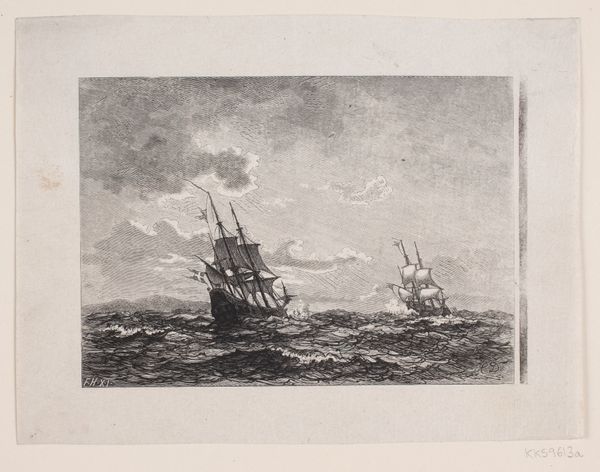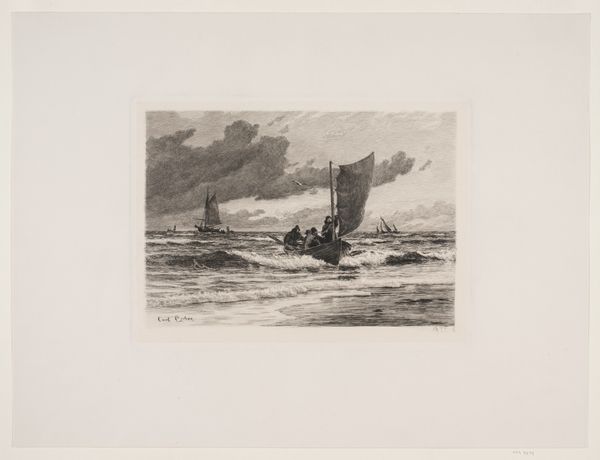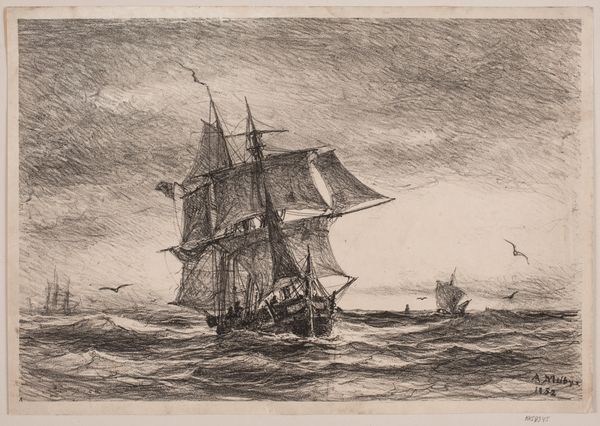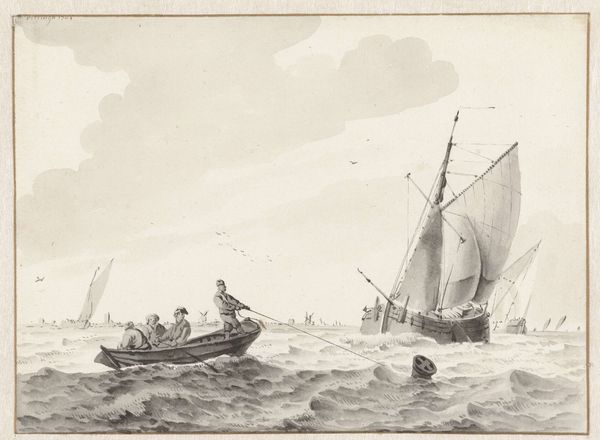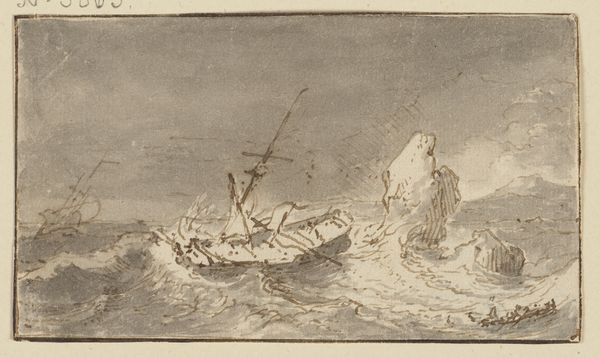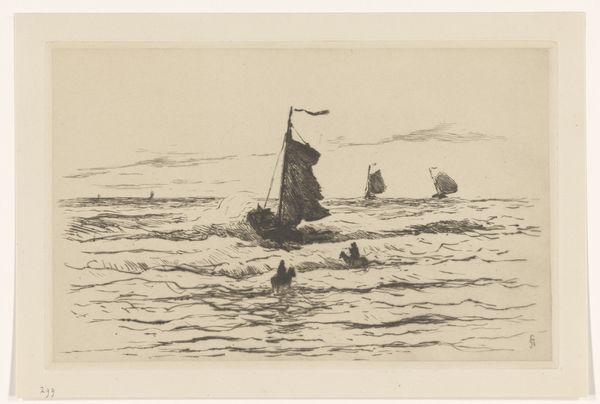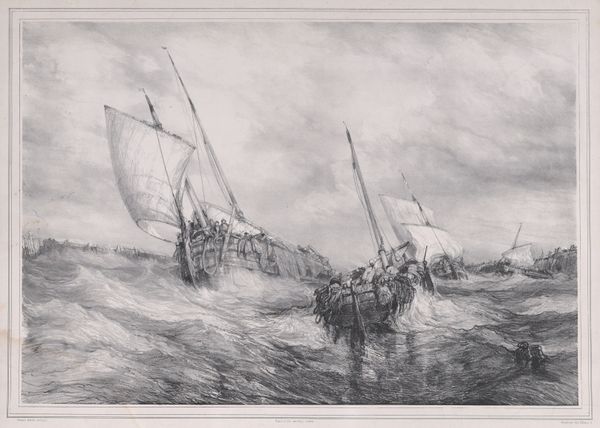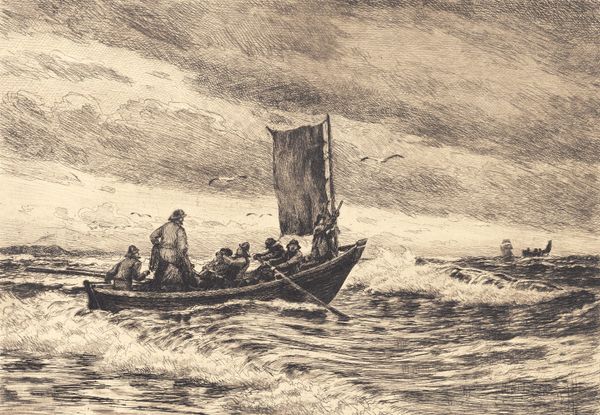
drawing, print, etching, graphite
#
drawing
# print
#
etching
#
landscape
#
charcoal drawing
#
pencil drawing
#
graphite
#
graphite
#
realism
Dimensions: image: 365 x 461 mm sheet: 469 x 571 mm
Copyright: National Gallery of Art: CC0 1.0
Curator: Ah, here we have "After the Storm", an etching by J. Henry Hill, dating back to 1886. It’s a powerful scene, don't you think? Editor: My first impression is one of turbulent beauty. The contrast between the dark, brooding sky and the rough sea is quite striking. It immediately conveys a sense of nature's raw power, yet there's a certain serenity in the small boat persisting through it all. Curator: Absolutely. And consider the historical context: the late 19th century witnessed increasing industrialization and urbanization. Works like this offered a counter-narrative, celebrating nature's resilience against the backdrop of societal change. Think about the symbolic weight of the storm itself; it could represent broader social upheavals and the struggle for survival faced by many at the time. Editor: The composition draws my eye. The artist uses the strong diagonal of the boat's sail to cut through the horizontal waves and sky, creating a dynamic tension. Note how the textures achieved through etching really enhance the drama, the light and shadow defining the forms. Curator: Yes, the materiality and the etching process itself mirrors that sense of enduring strength. It suggests human adaptation, with the small boat representing vulnerable people navigating vast forces. The waves could represent obstacles, discrimination, social inequality, and the enduring spirit required to combat them. Editor: The limited tonal range and the lines used to delineate form create a sort of immediacy. It brings a visual depth and captures the essence of the seascape. The structuralist in me also sees a play between order, the implied geometry of the vessel and rigging, and chaos, the irregular and dynamic qualities of sea and clouds. Curator: Precisely. Ultimately, art is also a sociopolitical mirror, reflecting collective consciousness and offering alternative perspectives. An artwork like this provokes questions around environmental concerns and social issues still pertinent today. Editor: Indeed, the artist invites us to consider those perspectives by carefully arranging shapes and textures within a plane to create a cohesive expression of a feeling. And, with this, my perspective on the artwork has now shifted as well. Thank you.
Comments
No comments
Be the first to comment and join the conversation on the ultimate creative platform.
